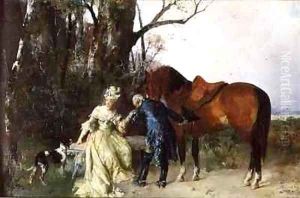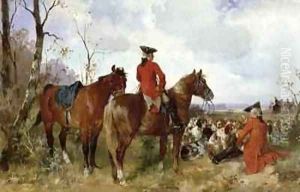G. Hans Buttner Paintings
G. Hans Buttner was a German artist known for his contributions to painting and illustration in the early to mid-20th century. Born in 1894 in Germany, Buttner's work was deeply influenced by the tumultuous events of his time, including both World Wars, the interwar period, and the significant cultural shifts occurring in Germany and across Europe. Despite the challenges posed by the socio-political environment, Buttner developed a distinctive style that merged elements of expressionism with traditional and contemporary motifs.
Buttner's early career was marked by his exploration of various artistic movements, but he eventually found his voice in a unique blend of realism and abstraction. His paintings often featured bold colors, dynamic compositions, and a deep sense of emotion, reflecting the artist's personal response to the world around him. In addition to his paintings, Buttner was also recognized for his work as an illustrator, contributing to books and periodicals of the time. His illustrations often carried the same vibrancy and depth as his paintings, making them highly sought after by publishers.
Throughout his career, G. Hans Buttner exhibited his work in various galleries and shows across Germany and Europe, gaining a modest following. Despite the popularity of other movements during his lifetime, such as Bauhaus and Dada, Buttner remained committed to his unique artistic vision, which did not always align with the prevailing trends. His dedication to his craft and his ability to convey complex emotions through his art earned him a place in the annals of 20th-century German art.
Buttner's work provides a fascinating insight into the era in which he lived, capturing the essence of a society in flux. His paintings and illustrations serve not only as artistic expressions but also as historical documents that offer a window into the cultural and social dynamics of early to mid-20th century Germany. G. Hans Buttner passed away in 1965, leaving behind a body of work that continues to be studied and appreciated by art historians and enthusiasts alike. His legacy is one of creativity, resilience, and the power of art to reflect and transcend its time.

